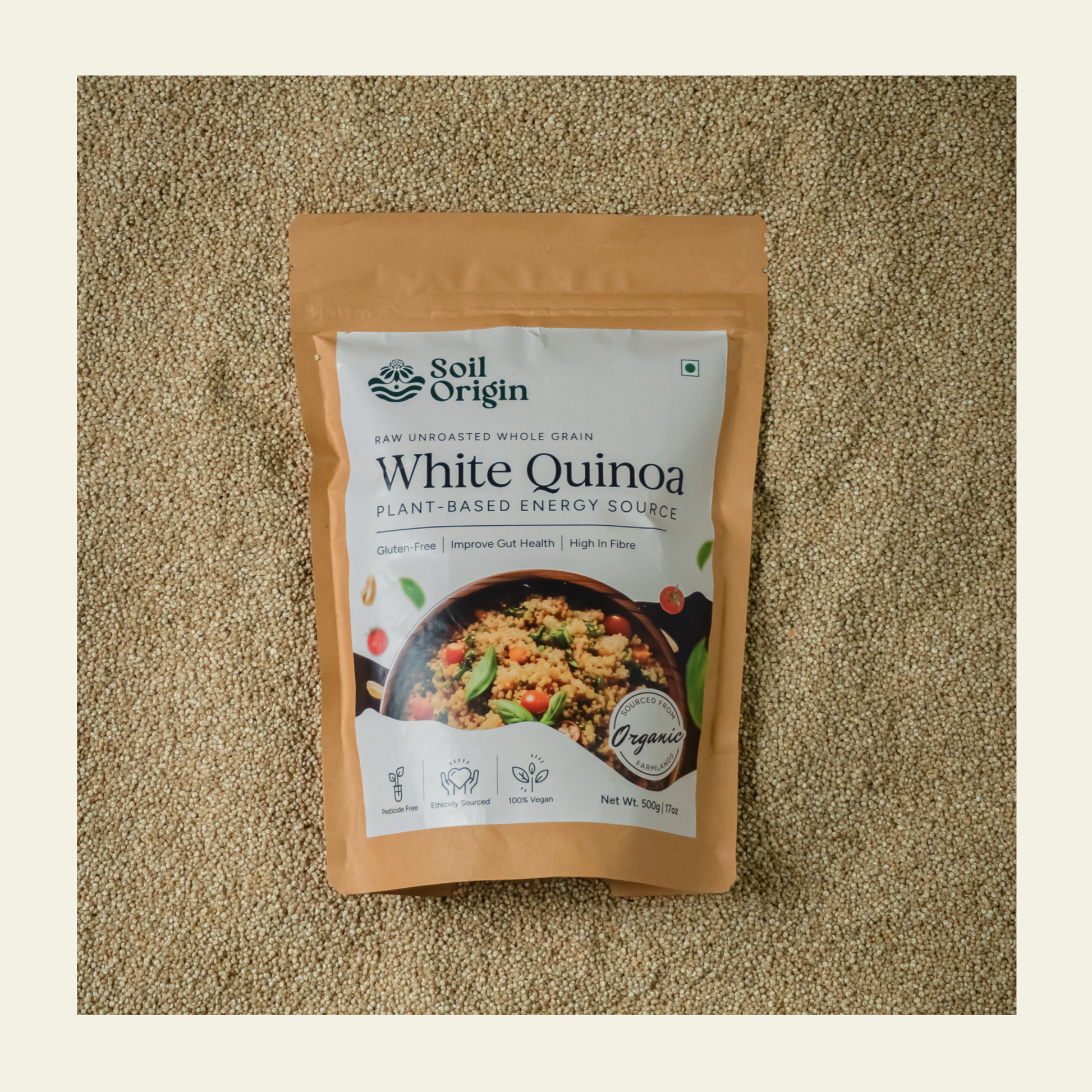
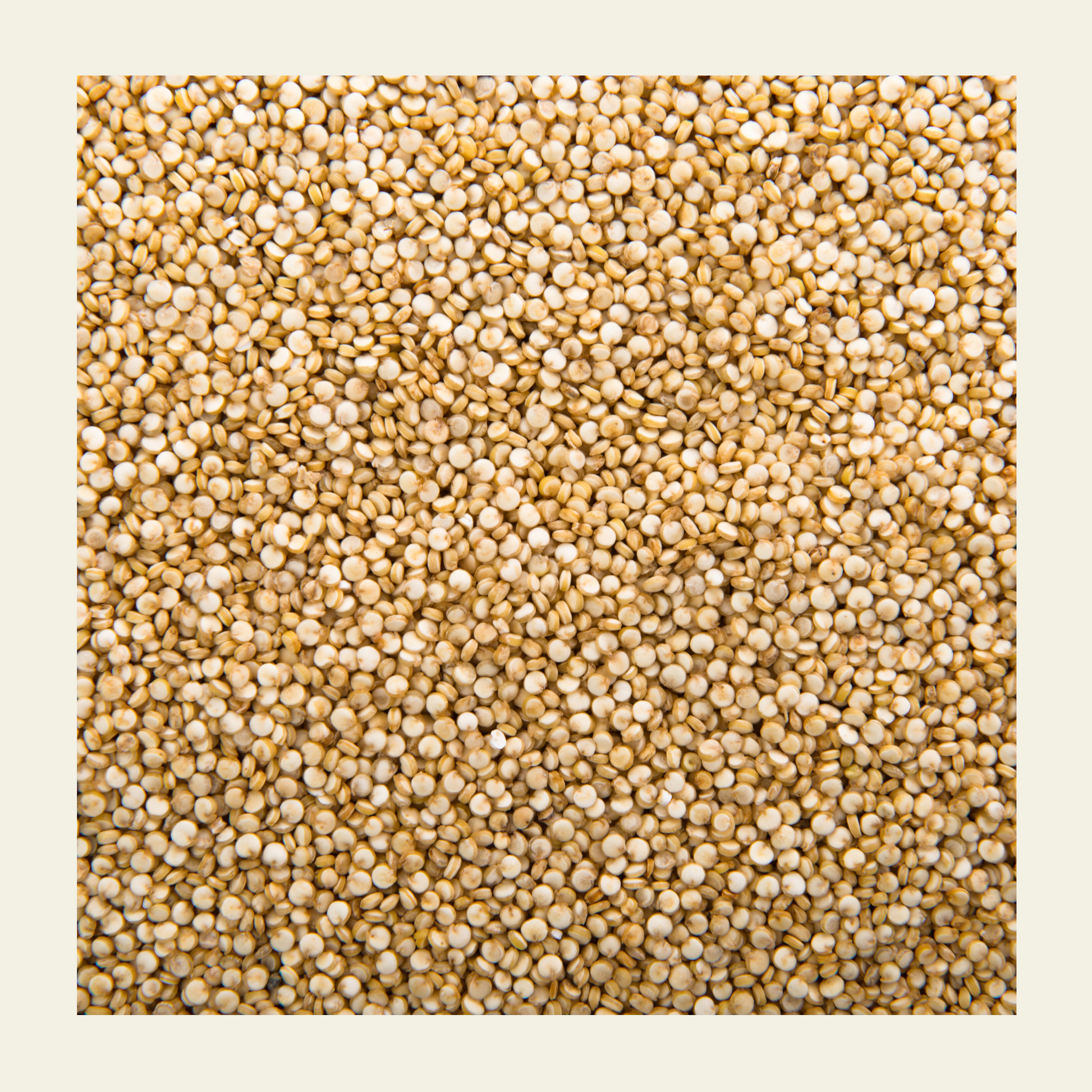
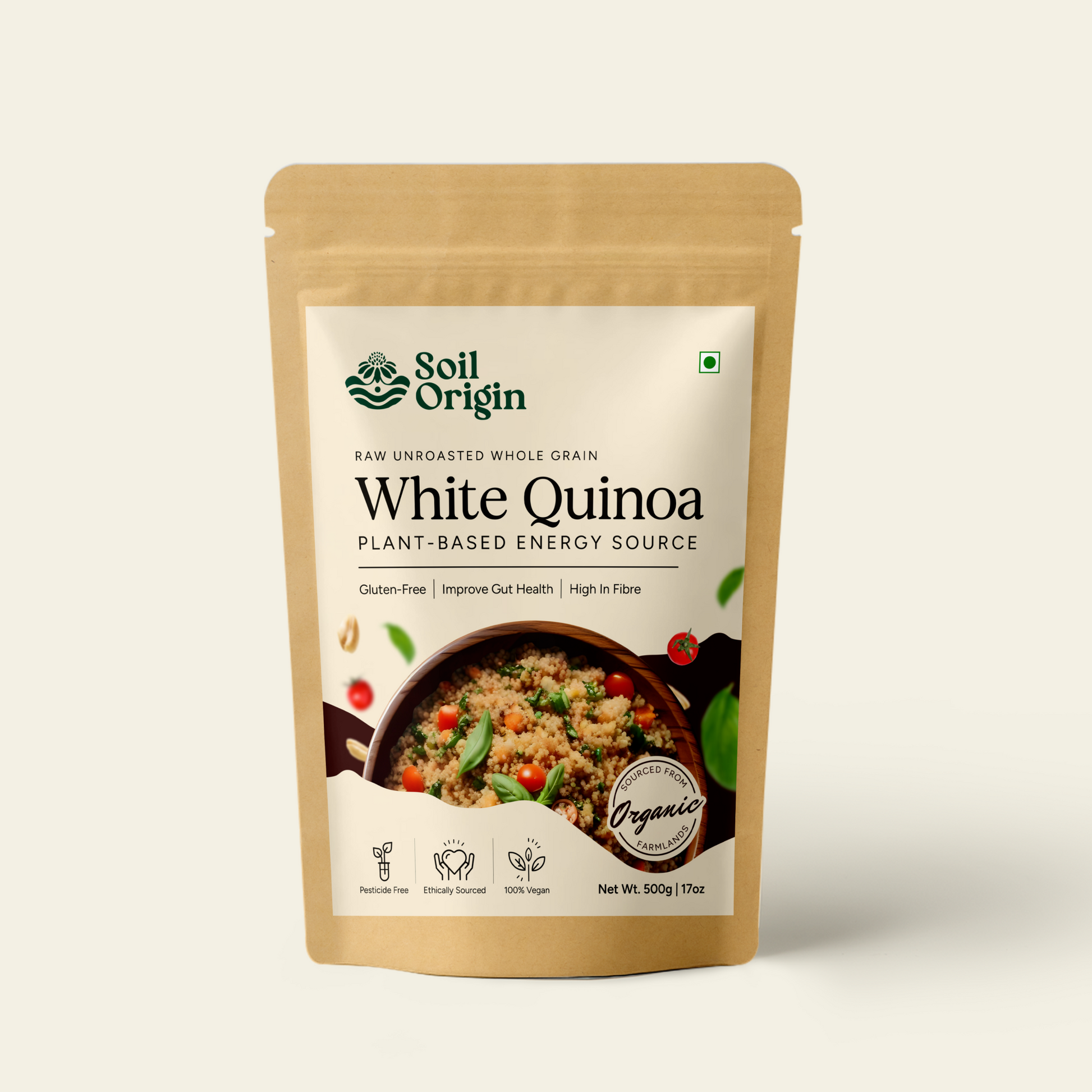
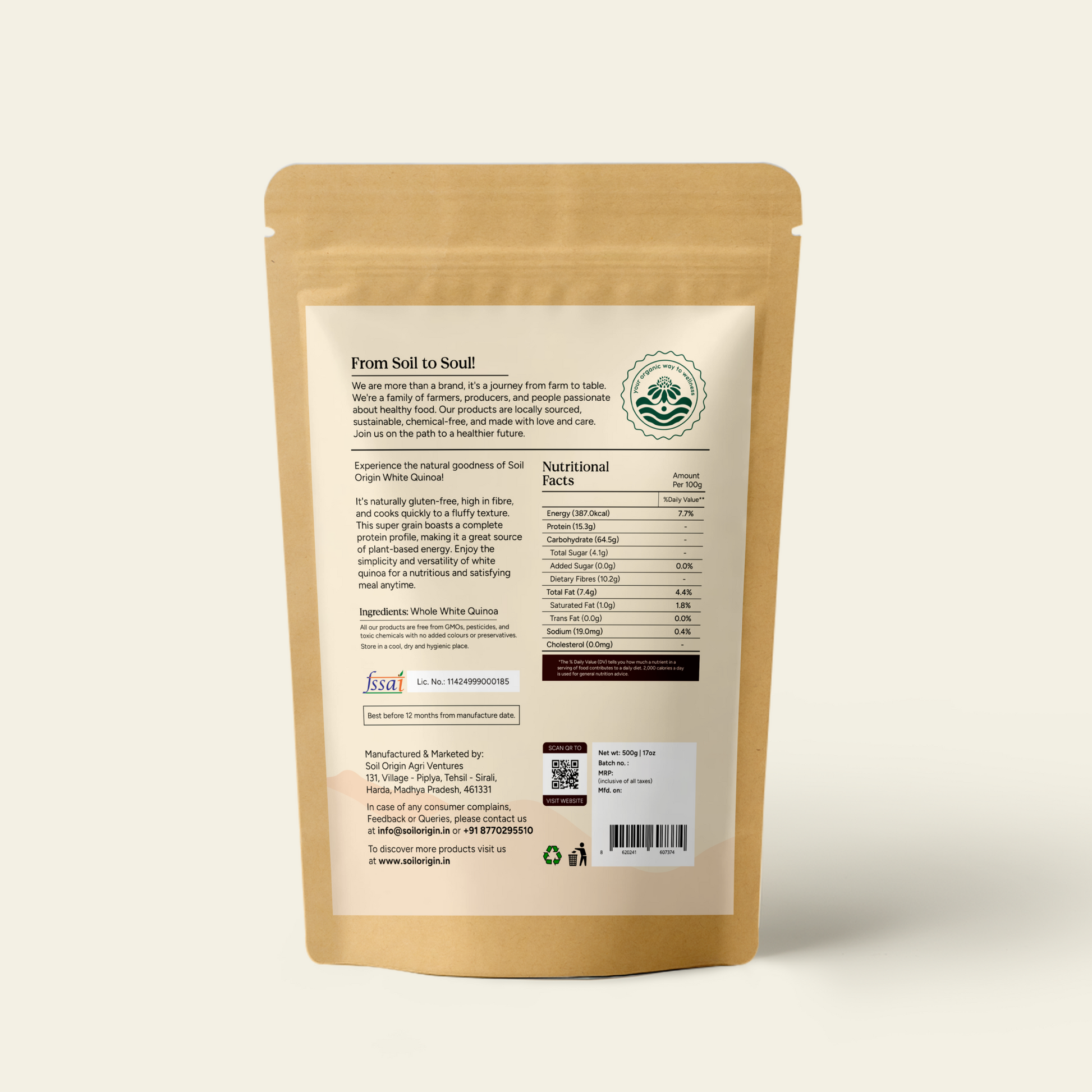

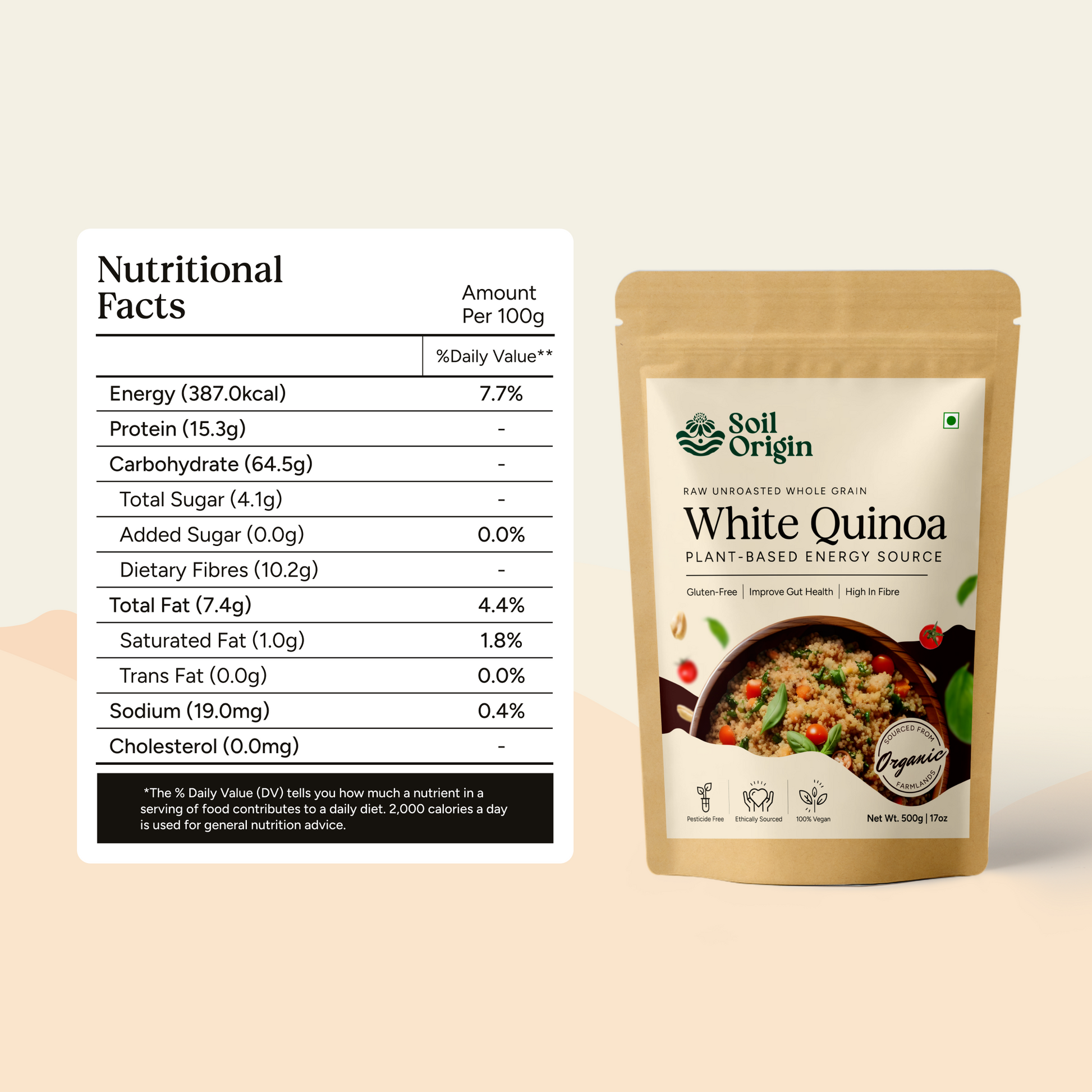
Whole Quinoa
Weight: 500 g
-
Tax included. Shipping calculated at checkout.
Experience the versatility and nutritional value of Soil Origin White Quinoa, an ancient grain that adds a wholesome touch to your diet. This easy-to-cook grain requires minimal preparation and boasts a naturally light and fluffy texture.
Enjoy the endless possibilities of Soil Origin White Quinoa. Whether you're preparing a quick and healthy breakfast or a gourmet meal, this versatile grain can be enjoyed on its own with a drizzle of olive oil and herbs, or incorporated into a variety of dishes.
Discover the natural goodness of Soil Origin White Quinoa, an ancient grain that offers a versatile and nutritious addition to your meals.
- Packed with protein, fiber, and essential vitamins, promoting overall health.
- Quinoa is naturally gluten-free, making it a great option for those with gluten intolerance or celiac disease.
- The presence of magnesium, phosphorus, and calcium supports strong bones.
- Quinoa has a low glycemic index, which helps regulate blood sugar levels and provides sustained energy.
- Quinoa is beneficial for heart health due to its fiber, healthy fats, and antioxidant content.
Store in an airtight container in a cool, dry place
Shelf Life: 12 months from MFD
Andhra Pradesh
Andhra Pradesh, a southern Indian state, is renowned for its diverse agricultural landscape and rich culinary heritage. Often referred to as the "Spice Garden of India," the state is a significant producer of various spices and condiments that have found their way into global kitchens. Turmeric is one of the most prominent spices cultivated in Andhra Pradesh. Its golden root, rich in curcumin, is a staple ingredient in Indian cuisine and is also used for medicinal purposes. Red chillies are another major crop, contributing to the fiery flavours of Andhra Pradesh's cuisine. The state also produces coriander, cumin, fennel, fenugreek, and quinoa, all of which are essential ingredients in Indian spice blends. Quinoa, a nutritious grain native to the Andes Mountains, has gained popularity in recent years for its high protein content and complete amino acid profile. Andhra Pradesh has emerged as a significant producer of quinoa, adapting its cultivation practices to suit the state's climatic conditions. The grain is grown in various regions of the state, particularly in the Anantapur district. The state's agricultural practices have been influenced by its rich cultural heritage. Traditional farming methods like intercropping and organic cultivation have been employed to preserve the soil's health and biodiversity.
FAQs
No, quinoa is not a cereal. It is sometimes called a pseudo-cereal because of its grain-like appearance and sometimes a pseudo-oilseed because of its high content of fat.
Quinoa has a very delicate taste, often described as nutty or earthy. Quinoa contains saponins, which are normally removed mechanically prior to being sold, or otherwise need to be carefully rinsed off prior to cooking to remove their bitter taste. Quinoa has an interesting texture that can add crunchiness to almost any recipe. Quinoa can be classified into “bitter” and “sweet” varieties that reflect the saponin content, which is much lower in the sweet varieties.
No, Although amaranth (Amaranthus caudatus L.) and quinoa belong to the same family, and are both originally from the Latin American region, amaranth is a different crop species.
Rinse one cup of quinoa in a sieve under cold running water and drain well. Place into a pan with one and a half cups of water, adding a pinch of salt or any flavourings that you would like. Bring to the boil, before reducing the heat to low and placing the lid on the pan. The quinoa is ready once all the water has been absorbed.
Quinoa is rich in fibre, proteins and carbohydrates. It also contains certain minerals, vitamins (A and C) and many bioactive components.














